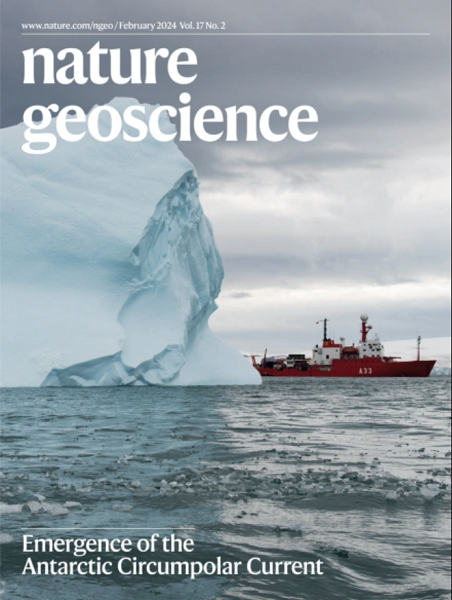金星上的伊什塔尔高地是通过类似陨石坑的形成机制抬升起来的
IF 16.1
1区 地球科学
Q1 GEOSCIENCES, MULTIDISCIPLINARY
引用次数: 0
摘要
金星上的伊斯塔地高原由拉克希米高原(Lakshmi Planum)组成,这是一个澳大利亚大小的地壳高原,平均海拔约 4 千米,与青藏高原相当,周围是海拔约 10 千米的细长山带,比喜马拉雅山还要高。该地区的地壳很厚,相当于地球上的火山口。在地球上,高原和山地带是构造板块碰撞的结果。然而,由于金星缺乏类似地球的板块构造,伊斯塔地拉的起源仍然是个谜。在这里,我们利用类金星地幔对流的三维热化学机械计算模拟,展示了岩浆活动和构造是如何从地幔动力学中产生的。模拟结果表明,由于初始水化程度高或地表温度高而导致岩石圈减弱,对流减薄和减压熔融作用增强,有利于在深层残余贫化地幔顶部形成厚厚的岩浆地壳。较硬的残余地根使地幔流向外偏转,导致浮力岩石圈周围形成褶皱带,这些褶皱带随后被抬升为高原,并防止进一步变形。模拟的地形、地壳厚度和重力与伊斯塔地球的观测约束相一致。我们的研究结果表明,金星上高原的形成可能与早期地球上板块构造形成之前的陨石坑形成类似。本文章由计算机程序翻译,如有差异,请以英文原文为准。


Ishtar Terra highlands on Venus raised by craton-like formation mechanisms
The Ishtar Terra highlands on Venus consist of Lakshmi Planum, an Australia-sized crustal plateau with an average elevation of ~4 km that is comparable to that of the Tibetan Plateau, surrounded by elongated mountain belts with elevations of around 10 km, taller than the Himalayas. The region is floored by thick crust that is comparable to that of cratons on Earth. On Earth, plateaus and mountain belts result from the collision of tectonic plates. However, the origin of Ishtar Terra remains enigmatic because Venus lacks Earth-like plate tectonics. Here we use three-dimensional thermo-chemo-mechanical computational simulations of Venus-like mantle convection to show how magmatism and tectonics emerge from mantle dynamics. The simulations show that a lithosphere weakened as a result of high initial hydration or high surface temperatures enhances convective thinning and decompression melting, favouring the emplacement of a thick magmatic crust on top of a deep residual depleted mantle. The stiffer residual root deflects mantle flow outwards, leading to the formation of fold belts around the buoyant lithosphere that are consequently uplifted into a plateau and preserved from further deformation. The modelled topography, crustal thicknesses and gravity is consistent with observational constraints of Ishtar Terra. Our findings suggest that plateau formation on Venus may operate similarly to craton formation on the hot early Earth, before the onset of plate tectonics. Venusian highland terrains such as Ishtar Terra formed from melting beneath thinned lithosphere that created a stiff mantle root in a mechanism akin to craton formation on the early Earth, according to three-dimensional computational simulations.
求助全文
通过发布文献求助,成功后即可免费获取论文全文。
去求助
来源期刊

Nature Geoscience
地学-地球科学综合
CiteScore
26.70
自引率
1.60%
发文量
187
审稿时长
3.3 months
期刊介绍:
Nature Geoscience is a monthly interdisciplinary journal that gathers top-tier research spanning Earth Sciences and related fields.
The journal covers all geoscience disciplines, including fieldwork, modeling, and theoretical studies.
Topics include atmospheric science, biogeochemistry, climate science, geobiology, geochemistry, geoinformatics, remote sensing, geology, geomagnetism, paleomagnetism, geomorphology, geophysics, glaciology, hydrology, limnology, mineralogy, oceanography, paleontology, paleoclimatology, paleoceanography, petrology, planetary science, seismology, space physics, tectonics, and volcanology.
Nature Geoscience upholds its commitment to publishing significant, high-quality Earth Sciences research through fair, rapid, and rigorous peer review, overseen by a team of full-time professional editors.
 求助内容:
求助内容: 应助结果提醒方式:
应助结果提醒方式:


